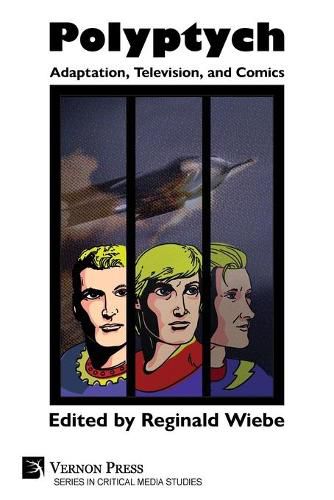Readings Newsletter
Become a Readings Member to make your shopping experience even easier.
Sign in or sign up for free!
You’re not far away from qualifying for FREE standard shipping within Australia
You’ve qualified for FREE standard shipping within Australia
The cart is loading…






This title is printed to order. This book may have been self-published. If so, we cannot guarantee the quality of the content. In the main most books will have gone through the editing process however some may not. We therefore suggest that you be aware of this before ordering this book. If in doubt check either the author or publisher’s details as we are unable to accept any returns unless they are faulty. Please contact us if you have any questions.
Through each of its chapters, ‘Polyptych: Adaptation, Television, and Comics’ examines the complex dynamics of adapting serialized texts. The transmedial adaptation of collaborative and unstable texts does not lend itself to the same strategies as other, more static adaptations such as novels or plays. Building off the foundational work of Linda Hutcheon and Gerard Genette, Polyptych considers the analogy of adaptation as a palimpsest-a manuscript page that has been reused, leaving traces of the previous work behind-as needing to be reevaluated. A polyptych is a multi-panel artwork and provides a new model for analyzing how adaptation works when translating collaborative and unstable texts. Given that most television and comic books are episodic and serialized, and considering that both media are also the cumulative work of many artists, this book offers a series of distanced readings to reassess how adaptation works in this field. Comic book adaptations on television are plentiful and are nearly completely ignored in critical discussions of adaptation.
This collection focuses on texts that fall outside the most common subjects of study among the corpus and contributes to expanding the field of inquiry. The book features texts that are subjects of previous academic interest, as well as studies of texts that have never before been critically considered. It also includes an appendix that provides the first list of comic book adaptations on North American television. ‘Polyptych’ is a unique and timely contribution to dynamic and growing fields of study.
The book will be of interest to scholars and researchers in the fields of Comic Studies, Adaptation Studies, and Critical Media Studies more broadly, as well as to students undertaking courses on these subjects. It will also appeal to comic book and pop culture fans who wish to expand their knowledge on the subject.
$9.00 standard shipping within Australia
FREE standard shipping within Australia for orders over $100.00
Express & International shipping calculated at checkout
This title is printed to order. This book may have been self-published. If so, we cannot guarantee the quality of the content. In the main most books will have gone through the editing process however some may not. We therefore suggest that you be aware of this before ordering this book. If in doubt check either the author or publisher’s details as we are unable to accept any returns unless they are faulty. Please contact us if you have any questions.
Through each of its chapters, ‘Polyptych: Adaptation, Television, and Comics’ examines the complex dynamics of adapting serialized texts. The transmedial adaptation of collaborative and unstable texts does not lend itself to the same strategies as other, more static adaptations such as novels or plays. Building off the foundational work of Linda Hutcheon and Gerard Genette, Polyptych considers the analogy of adaptation as a palimpsest-a manuscript page that has been reused, leaving traces of the previous work behind-as needing to be reevaluated. A polyptych is a multi-panel artwork and provides a new model for analyzing how adaptation works when translating collaborative and unstable texts. Given that most television and comic books are episodic and serialized, and considering that both media are also the cumulative work of many artists, this book offers a series of distanced readings to reassess how adaptation works in this field. Comic book adaptations on television are plentiful and are nearly completely ignored in critical discussions of adaptation.
This collection focuses on texts that fall outside the most common subjects of study among the corpus and contributes to expanding the field of inquiry. The book features texts that are subjects of previous academic interest, as well as studies of texts that have never before been critically considered. It also includes an appendix that provides the first list of comic book adaptations on North American television. ‘Polyptych’ is a unique and timely contribution to dynamic and growing fields of study.
The book will be of interest to scholars and researchers in the fields of Comic Studies, Adaptation Studies, and Critical Media Studies more broadly, as well as to students undertaking courses on these subjects. It will also appeal to comic book and pop culture fans who wish to expand their knowledge on the subject.